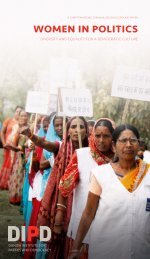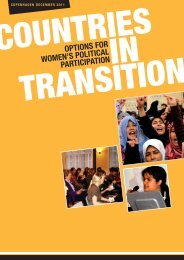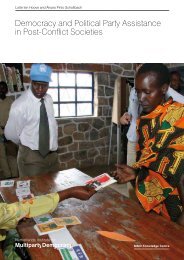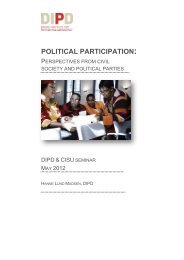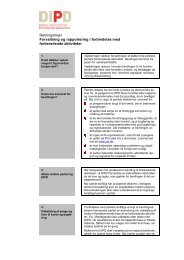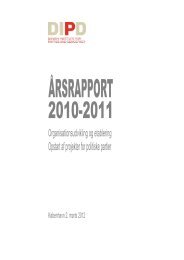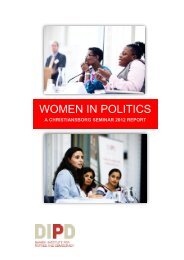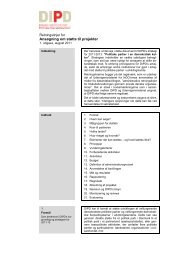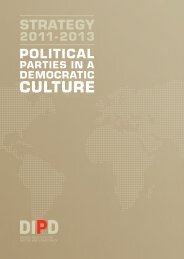Political Parties in Africa: Challenges for Sustained Multiparty
Political Parties in Africa: Challenges for Sustained Multiparty
Political Parties in Africa: Challenges for Sustained Multiparty
You also want an ePaper? Increase the reach of your titles
YUMPU automatically turns print PDFs into web optimized ePapers that Google loves.
<strong>Political</strong> <strong>Parties</strong> <strong>in</strong> <strong>Africa</strong>: <strong>Challenges</strong> <strong>for</strong> Susta<strong>in</strong>ed <strong>Multiparty</strong> Democracy<br />
of Mauritania, and the rul<strong>in</strong>g National Congress Party (led by President Omar El<br />
Bashir) and the opposition New National Congress of Sudan (led by the Islamic<br />
clerk, Hassan Al-Turabi) <strong>in</strong> Sudan.<br />
3.1.2 The socio-economic context<br />
Apart from the glitter of the capital cities and a few urban centres, the general socioeconomic<br />
context <strong>in</strong> <strong>Africa</strong> can be characterized as one of underdevelopment and<br />
poverty. <strong>Africa</strong> is the poorest region <strong>in</strong> the world.<br />
Over the last 30 years, on average, its people have seen virtually no <strong>in</strong>crease <strong>in</strong> their<br />
<strong>in</strong>comes. Over the last decade Sub-Saharan <strong>Africa</strong>n countries have seen average<br />
growth rates above 4 per cent, <strong>in</strong>clud<strong>in</strong>g ten with rates above 5 per cent and three<br />
with rates above 7 per cent. There are examples of strong per<strong>for</strong>mers from across<br />
the region, such as Mozambique <strong>in</strong> the south, Ben<strong>in</strong> <strong>in</strong> the west, and Uganda <strong>in</strong> the<br />
east. However, despite these positive results, there is extensive evidence that poverty<br />
is <strong>in</strong>creas<strong>in</strong>g. For example, Jeffrey Sachs, us<strong>in</strong>g the World Bank standard <strong>in</strong>come<br />
of 1 US dollar (USD) per day per person, measured <strong>in</strong> purchas<strong>in</strong>g power parity, to<br />
determ<strong>in</strong>e the numbers of extreme poor, and <strong>in</strong>come between 1 USD per day and<br />
2 USD per day to measure moderate poverty, has illustrated that poverty is rampant<br />
<strong>in</strong> <strong>Africa</strong> (Sachs 2005). The overwhelm<strong>in</strong>g share of the world’s extreme poor—93 per<br />
cent <strong>in</strong> 2001—live <strong>in</strong> three regions—East Asia, South Asia, and Sub-Saharan <strong>Africa</strong>.<br />
S<strong>in</strong>ce 1981 the numbers of the extremely poor have risen <strong>in</strong> Sub-Saharan <strong>Africa</strong>, but<br />
have fallen <strong>in</strong> East Asia and South Asia. Almost half of <strong>Africa</strong>’s population is deemed<br />
to live <strong>in</strong> extreme poverty, and that proportion has risen slightly over the period. It<br />
is ris<strong>in</strong>g <strong>in</strong> <strong>Africa</strong> both <strong>in</strong> absolute terms and as a share of the population, while it<br />
is fall<strong>in</strong>g both <strong>in</strong> absolute terms and as a proportion of the population <strong>in</strong> the Asian<br />
regions.<br />
<strong>Africa</strong> also endures highly unequal distribution of <strong>in</strong>come, which significantly reduces<br />
the positive impact of growth on poverty. Inequality is particularly high <strong>in</strong> Lesotho,<br />
Botswana, Sierra Leone, the Central <strong>Africa</strong>n Republic, Swaziland and South <strong>Africa</strong>.<br />
It is most severe <strong>in</strong> Namibia, which has one of the highest levels of <strong>in</strong>equality <strong>in</strong> the<br />
world. Relatively equal distributions of <strong>in</strong>come <strong>in</strong> Ghana and Uganda have meant<br />
that growth <strong>in</strong> these countries has been l<strong>in</strong>ked more strongly to poverty reduction.<br />
Over the last decade the Human Development Index (HDI) has been ris<strong>in</strong>g across all<br />
the develop<strong>in</strong>g regions, although at variable rates—and with the obvious exception<br />
of Sub-Saharan <strong>Africa</strong>. Amid the overall progress, however, many countries have<br />
suffered unprecedented reversals. Thirteen <strong>Africa</strong>n countries (the Democratic<br />
Republic of the Congo, Botswana, Cameroon, the Central <strong>Africa</strong>n Republic, Congo,



